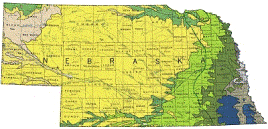United States Geological Survey

United States Geological Survey: Staff Publications
Document Type
Article
Date of this Version
9-2006
Citation
2006 Geological Society of America. For permission to copy, contact Copyright Permissions, GSA, or editing@geosociety.org. Geology; September 2006; v. 34; no. 9; p. 773–776; doi: 10.1130/G22685.1; 4 figures; 3 tables.
Abstract
Deep-water (307–697 m) antipatharian (black coral) specimens were collected from the southeastern continental slope of the United States and the north-central Gulf of Mexico. The sclerochronology of the specimens indicates that skeletal growth takes place by formation of concentric coeval layers. We used 210Pb to estimate radial growth rate of two specimens, and to establish that they were several centuries old. Bands were delaminated in KOH and analyzed for carbon and nitrogen stable isotopes. Carbon values ranged from _16.4‰ to _15.7‰; the oldest specimen displayed the largest range in values. Nitrogen values ranged from 7.7‰ to 8.6‰. Two specimens from the same location and depth had similar 15N signatures, indicating good reproducibility between specimens.
Included in
Geology Commons, Oceanography and Atmospheric Sciences and Meteorology Commons, Other Earth Sciences Commons, Other Environmental Sciences Commons


Comments
U.S. Government Work.